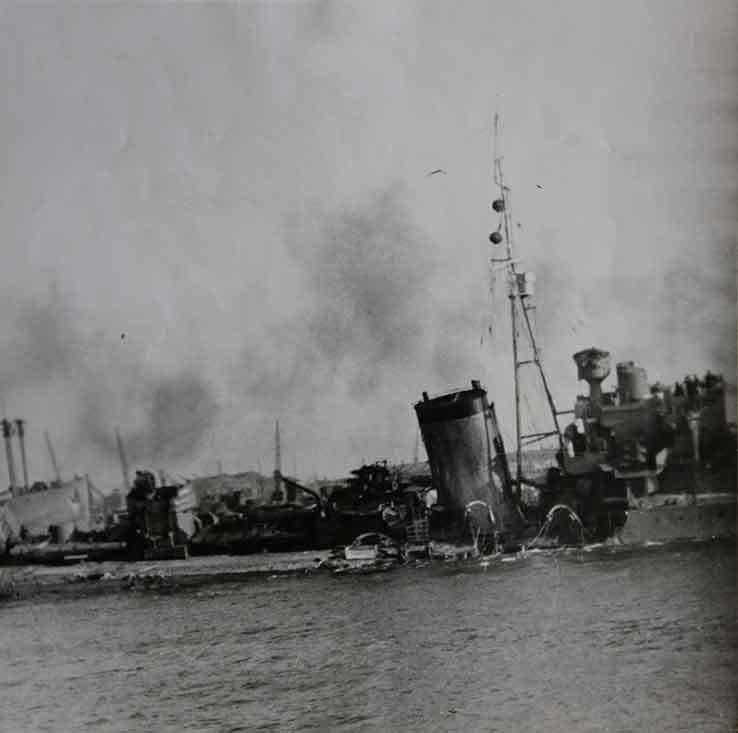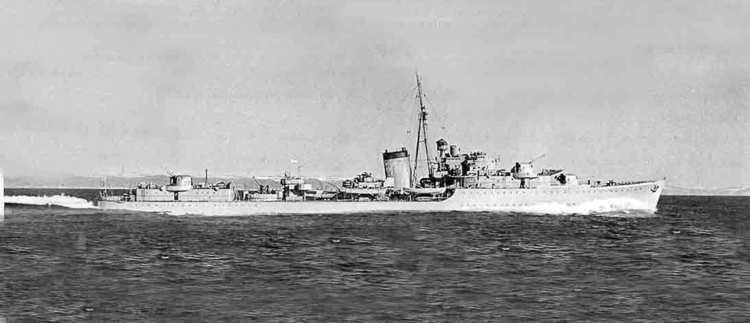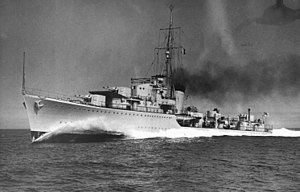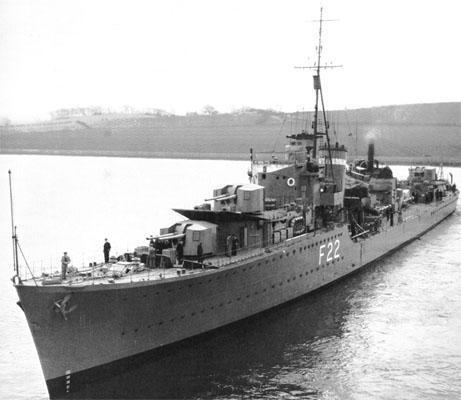Ordered 24 March 1937 Commissioned 23 August 1939 Length 109 m Launched 25 October 1938 | Laid down 26 August 1937 Construction started 26 August 1937 Displacement 1.597 million kg | |
 | ||
Namesake Admiral of the Fleet Sir John Kelly Motto Keep on instead of Hold on | ||
HMS Kelly (pennant number F01) was a K-class destroyer of the British Royal Navy, and flotilla leader of her class. She served through the early years of the Second World War; in Home Waters, off Norway and in the Mediterranean. Throughout her service, Kelly was commanded by Lord Louis Mountbatten. She was lost in action in 1941 during the Battle of Crete. In addition, Mountbatten served as commander (Captain (D)) of the 5th Destroyer Flotilla.
Contents

Kelly was built by Hawthorn Leslie and Company at Hebburn on the River Tyne. She was laid down on 26 August 1937, launched on 25 October 1938 and commissioned on 23 August 1939, just 11 days before commencement of hostilities. She was named after Admiral of the Fleet Sir John Kelly.

Home Waters (1939)

On the outbreak of the Second World War in September 1939, the Duke and Duchess of Windsor were brought from France, where they were living, back to Britain on board HMS Kelly.

On the afternoon of 14 December 1939, the tanker SS Atheltemplar struck a mine laid by German destroyers off the Tyne Estuary. Kelly and the Tribal-class destroyer HMS Mohawk were dispatched as escorts for the rescue tugs Great Emperor, Joffre and Langton. During the operation, Kelly also struck a mine and sustained damage to her hull. While Mohawk put a party aboard Atheltemplar, and Joffre and Langton took the tanker under tow, Kelly herself was taken in tow by Great Emperor and returned to the Tyne. Reaching the Tyne just before midnight, Kelly was assisted up river by the tugs Robert Redhead and Washington. She was towed to Hawthorn Leslie's yard for repairs, which took just a little over three months, and were completed in early March 1940.
This was the second of Kelly's misfortunes, having just returned to active service after a month in dry dock following storm damage. Repairs were completed on 28 February 1940, and Kelly returned to the fray. Astonishingly, she was involved in a collision with HMS Gurkha just two days later on 2 March, necessitating a further 8 weeks in dry dock, this time on the Thames. She was released on 27 April, in time to assist with the evacuation of allied forces from Namsos.
Norwegian campaign (1940)
On the night 9 May/10 May 1940, during the Battle of Norway, Kelly was torpedoed amidships by the German E-boat S 31, under command of Oberleutnant zur See Hermann Opdenhoff (for which action Oblt.z.S. Opdenhoff was awarded the Knight's Cross). Severely damaged, she was taken under tow by the tug Great Emperor and for four days she was attacked by E-boats and bombers as she struggled back to port at three knots. The Navy Controller wrote that she survived "not only by the good seamanship of the officers and men but also on account of the excellent workmanship which ensured the watertightness of the other compartments. A single defective rivet might have finished her." She was repaired and returned to service.
On return to Hebburn shipyard she was de-commissioned before undergoing extensive repairs; she was not fit for active service until December 1940. Her bad luck had seen her on active service for less than two weeks over the previous 14 months.
During this period her captain, Louis Mountbatten, as Captain (D), was forced to lead his flotilla from temporary placement in other ships of the flotilla; for a time he led from HMS Javelin, until she too succumbed to damage.
Kelly re-joined 5th Flotilla after re-commissioning in December 1940; after working-up trials and some service in the Channel, she and 5th Flotilla sailed for the Mediterranean, arriving at Malta in April 1941.
Mediterranean (1941)
In April 1941 she joined HM ships Abdiel, Dido, Jackal, Jersey, Kashmir, Kelvin and Kipling at Gibraltar to form Force S, an escort for reinforcements to the Mediterranean Fleet (Operation Salient). She arrived in Malta on the 28th and was deployed with her flotilla to join Force K for attacks on Axis shipping to North Africa.
On 8 May, following the loss of HMS Jersey to a mine and the subsequent clearance of her wreck, the flotilla left Malta and joined Ajax, Dido, Orion and Perth to escort supply convoys to Egypt and Greece (Operation Tiger). On the 10th she led the destroyers to bombard Benghazi before returning to Malta. On the 21st she was despatched to Crete with the Kashmir and Kipling and began patrols north of the island on the 22nd.
On the 23rd, during the evacuation of Crete, she was bombed and sunk, with half her crew killed. Kelly did succeed in shooting down three of the attacking Stukas, while another was badly damaged and crashed upon returning to base. The survivors were deeply affected by the loss of their ship; Mountbatten shared their loss and tried to console the ship's company by reminding them all that "we didn't leave the Kelly, the Kelly left us!"
Legacy
The 1942 film In Which We Serve starring Noël Coward and John Mills and telling the story of "HMS Torrin", is based on the career of Kelly. The HMS Kelly Association hosts reunions and commemorations. Notable supporters of the association have included HRH Prince Charles and Sir John Mills.
Battle Honours
Atlantic (1939) Norway (1940) Mediterranean (1941) Crete (1941)
